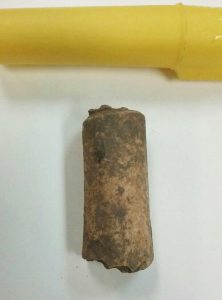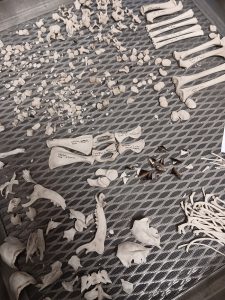Michelle Rathgaber, Arkansas Archeological Survey
"Archeology is..." series - May 2024

Zoology is the study of animals. Specifically, per the Merriam Webster Dictionary, it is a branch of biology concerned with the classification and the properties and vital phenomena of animals. So basically, it is studying all aspects of animals from where they live, who they live with, and what they eat, to how their bones are shaped, how they evolved into what they look like now, how each of their organs and organ systems work, what they are like on a cellular level, and even details more minute than that (like DNA or isotopes of strontium, but that’s another article). As a zooarcheologist, I study animals associated with the human past. As Mel wrote about when describing how archeology is anthropology, archeology deals with humans. But humans deal with animals in a variety of ways—and have throughout history—so the study of animals is essential to the study of archeology and understanding human lives in the past.
At the most basic and essential level, zooarcheologists identify animal bones from archeological sites so that we can understand what animals people had access to in the past. Access can mean a lot of different things and zooarcheologists help to figure this out. Sometimes access means use as a food source. If there are cut marks (tiny lines on the bone made when a stone tool hit the bone when cutting through muscle) on the bone or a large assemblage of meat heavy bones (like the upper legs), this often indicates that the animal was used as food. Sometimes access means commensal animals (such as mice, snakes, frogs, etc.) that live alongside humans. They aren’t pets, but they aren’t necessarily pests either. When almost every bone from a single small animal is present this can mean that the animal was scavenging and got caught in a place where it couldn’t escape (like a trash pit) and it died there. Sometimes access can mean companion animals. Archeologists sometimes find whole animals in a context that tells us that they were purposefully buried, rather than accidentally trapped, so the animals were likely companions (like a dog or cat today).

